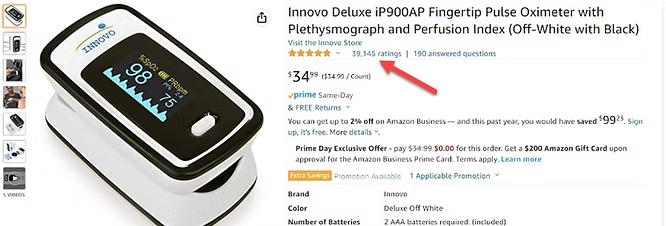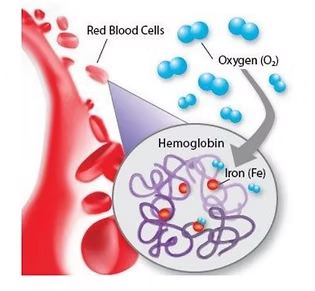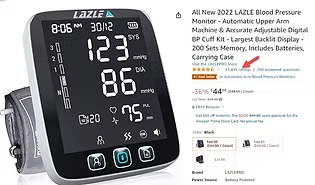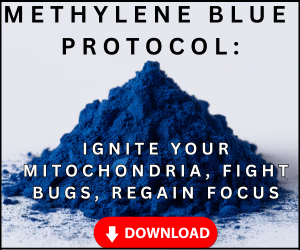Testing for Blood Oxygen Saturation and Blood Pressure At Home
(Before Getting Expensive Treatments!)
It can be costly to try and work with doctors to diagnose what may be causing your health issues. Problems such as fibromyalgia, brain fog, fatigue, and GI problems can all quickly rack up high bills in doctor’s visits and lab fees.
Some health problems require these expensive tests and bills in order to properly identify them. Before you spend thousands and thousands of dollars on stem cell therapy, or other major treatment and diagnostic plans, it is good to check for the “low-hanging fruit.”
By that, I mean issues that are significantly cheaper (even free) to test and treat. Some of these low-hanging fruit can even be tested and treated at home! It is important to try and treat the simple issues first. If treating these issues solve your problems, then you may see better results and save a lot of money and time in the process.
Two Low Hanging Fruits To Check At Home
For this example, it is best to have a small, affordable gadget called a pulse oximeter, which is affordable to purchase on Amazon. I have tried many different brands, and this is my favorite one.
In this example, we need to keep track of two things:
- Your blood-oxygen saturation, or making sure you have enough oxygen in your blood.
- Making sure your blood pressure is high enough to ensure your blood is being pumped deep into your tissues (a process called perfusion). The ideal blood pressure is 120/80.
If your blood pressure is low, then blood will not have enough pressure to help your blood perfuse deep into the tissue in your extremities (in particular your legs). Your entire body also needs the oxygen carried by the blood. It is very important to check both of these levels.
Lorem ipsum dolor sit amet, consectetur adipiscing elit. Ut elit tellus, luctus nec ullamcorper mattis, pulvinar dapibus leo.
When your blood passes through the lungs it becomes saturated with oxygen, which it then carries throughout the body to the different cells. This oxygen is dispersed and used by the cells.
To take a reading with a pulse oximeter, place the device on your finger. You can hold your hand in any comfortable way. I have found the best readings come when you place your hand palm-down on a tabletop with your arm bent, similar to taking a blood-pressure reading.
When I test my own readings, and I get (for example) a reading of 96, that means I have 96% oxygenation in my red blood cells. I find the readings can vary slightly, so I recommend doing multiple readings on multiple fingers. When I switch to different fingers, I get readings like 98% or 97%.
Most charts will say that 95% oxygen saturation is “normal,” but I prefer to see this number at 97% or higher. Under 96%, your blood may not be carrying enough oxygen where it needs to go.
Low oxygen saturation can indicate problems such as an iron deficiency. Too little iron can be a symptom of anemia, but you can have low iron levels without being anemic. Since iron is what carries and delivers oxygen throughout the body, low iron levels mean lower oxygen saturation.
The ideal blood pressure is 120/80. Any reading less than that means your cells are not getting the ideal amount of oxygen, since the blood cannot be pushed deep enough into the tissues.
Blood pressure monitors are also relatively affordable on Amazon. I recommend this one by LAZLE.
Low blood pressure can result in the following conditions:
- Dizziness
- Lightheadedness
- Fainting
- Dehydration and unusual thirst
- Blurred vision
- Nausea
- Cold, clammy, pale skin
- Rapid shallow breathing
- Fatigue
- Depression
- Lack of concentration (brain fog)
Checking your blood pressure regularly can help narrow down the cause of some of your issues before resorting to expensive testing and treatments. If your blood pressure is consistently high, please reach out to me to discuss potential causes and treatment options.
Conclusion
While you may have conditions that end up requiring expensive treatments or tests, it is best to start with the low-hanging fruit options first.
Too often people see the top-tier treatment plans and want to pay top-tier prices for them. Those treatments will have a very limited effect on your body if you don’t start with the basic principles and treatments first.
Frequently Asked Questions (FAQ)
"Low-hanging fruit" refer to simple, common, and affordable health issues that can cause complex symptoms like fatigue, brain fog, or GI problems. Checking these first—such as blood oxygen and blood pressure—can save you thousands of dollars on expensive tests and treatments. If correcting a simple issue resolves your symptoms, you avoid unnecessary cost and time.
You can check your blood oxygen saturation using an affordable pulse oximeter placed on your finger. For the most accurate reading, rest your palm on a table. While 95% is often considered "normal," an ideal reading is 97% or higher. A consistent reading below 96% may indicate issues like low iron, meaning your blood isn't carrying enough oxygen effectively.
Blood pressure is the force that pushes blood deep into your tissues, a process called perfusion. If your blood pressure is too low, oxygen-rich blood cannot reach your extremities and cells effectively. The ideal blood pressure is 120/80. Lower readings can lead to symptoms like dizziness, fatigue, brain fog, and nausea.
Low blood pressure (hypotension) can cause a range of symptoms, including dizziness, lightheadedness, fainting, dehydration, blurred vision, nausea, cold/clammy skin, rapid shallow breathing, fatigue, depression, and lack of concentration (brain fog).
You only need two affordable devices: a pulse oximeter to check blood oxygen saturation and a home blood pressure monitor. Both are available online and provide valuable data to help you and your healthcare provider identify potential root causes of your symptoms before pursuing costly interventions.











